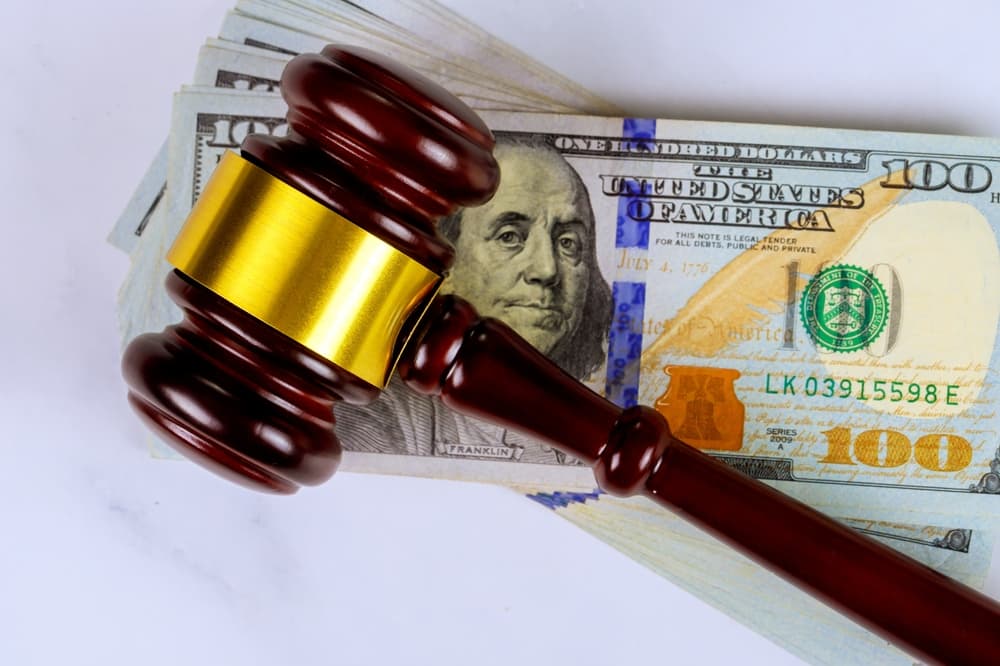Getting struck by a car while walking often leaves a person with life-changing injuries, long recovery times, and an uncertain future. Families who lose a loved one in these collisions also face immeasurable grief along with sudden financial strain. If someone else caused the crash, Missouri law allows you to seek damages through a personal injury or wrongful death claim. Many people in this position ask the same question early on: How much compensation do you get for a pedestrian accident?
The answer depends on many factors, such as the severity of injuries, the insurance coverage available, and how strongly the evidence supports your case. Working with a Missouri pedestrian accident lawyer gives you the support needed to gather records, calculate damages, and press insurance companies for a fair outcome. If you or your family are dealing with the aftermath of a pedestrian accident, you can contact a Missouri pedestrian accident attorney near you for a free consultation and case evaluation.
Key Takeaways About Missouri Pedestrian Accidents
- Pedestrian accident compensation in Missouri covers both economic and non-economic losses, and in rare cases punitive damages.
- Settlement amounts vary widely, often ranging from tens of thousands to millions depending on the severity of injuries and insurance coverage.
- Factors that impact settlement value include medical costs, lost wages, fault percentage, and long-term effects on daily life.
- Missouri’s pure comparative fault law reduces recovery if the pedestrian shares any blame, but you can still pursue damages even if partially at fault.
- Acting quickly protects your claim since Missouri’s statute of limitations sets strict deadlines.
What Types of Compensation Are Available for Pedestrian Accident Victims?
Pedestrian accident cases aim to restore victims as much as possible to the position they were in before the crash, at least financially. Missouri law divides damages into categories that cover different types of losses.
Economic Damages
Economic damages cover the measurable financial costs of an accident. These damages rely on receipts, bills, employment records, and other documentation.
- Medical bills: This includes ambulance transport, emergency room care, hospital stays, surgeries, medication, physical therapy, and specialist visits. For many victims, medical expenses begin immediately and continue for months or years.
- Future medical costs: When injuries require ongoing care, such as repeat surgeries or lifelong treatment for paralysis or brain injuries, the settlement must account for projected expenses. Lawyers often work with medical experts to calculate these figures.
- Lost wages: Victims often miss work while recovering. Pay stubs and employer records help establish how much income was lost.
- Reduced earning ability: Some injuries permanently affect the ability to work or force a career change. In these cases, experts may calculate how much income the victim will lose over a lifetime.
- Out-of-pocket costs: Everyday expenses like transportation to appointments, hiring household help, or making home modifications (ramps, stairlifts, bathroom changes) also fall under economic damages.
Non-Economic Damages
Not every loss shows up on a receipt. Injuries impact a person’s comfort, happiness, and relationships. Non-economic damages address these harder-to-measure harms.
- Pain and suffering: The physical pain from broken bones, spinal injuries, or lingering nerve damage can last long after the accident. This category acknowledges that burden.
- Loss of enjoyment of life: If you can’t return to hobbies, sports, or simple daily activities you once enjoyed, compensation may reflect this change.
- Emotional distress: Anxiety, depression, or post-traumatic stress often follow a serious crash. These conditions affect both the victim and their family.
- Impact on relationships: Spouses and close family members sometimes lose the companionship, intimacy, or support they relied on before the accident. Missouri law allows damages for this loss of consortium.
- Disfigurement and scarring: Visible scars or permanent changes to appearance often affect confidence and social interactions. Settlements take this into account.
Punitive Damages in Severe Cases
Punitive damages apply only when the driver’s behavior showed extreme recklessness or intentional harm, such as drunk driving or racing through a crowded crosswalk. These damages aim to punish the wrongdoer rather than reimburse the victim. Missouri courts allow them in limited but serious circumstances.
How Much Money Can You Expect from a Pedestrian Accident Settlement?
Pedestrian accident settlements in Missouri don’t follow a set formula. Instead, the outcome depends on the details of the accident, the evidence presented, and the insurance coverage available.
Factors That Increase Settlement Value
High medical bills, permanent disabilities, and strong evidence of the driver’s fault usually raise the potential settlement. Demonstrating how injuries prevent someone from returning to their career also increases value. Clear proof from medical experts, accident reconstruction, and witness statements strengthens negotiations.
Why Some Cases Settle for More Than Others
Cases with severe injuries or undeniable liability often push insurance companies to settle for higher amounts rather than risk trial. On the other hand, if liability is disputed or policy limits cap coverage, settlements may be lower even with serious injuries. Victims with strong legal representation often receive higher offers because insurers know the case has been thoroughly prepared.
What Factors Determine Your Compensation Amount?
Several core issues drive the value of a pedestrian accident case in Missouri.
Severity of Your Injuries
The more severe the injury, the higher the medical costs, time off work, and personal suffering. Permanent disabilities, scarring, and brain injuries usually lead to larger settlements.
Impact on Your Daily Life and Work
Compensation accounts for how injuries interfere with normal routines. Someone who can no longer enjoy sports, parenting activities, or social life has stronger claims for non-economic damages. Loss of career opportunities or the ability to earn at the same level also carries significant weight.
Insurance Policy Limits
Even if damages are high, the available insurance coverage often caps the payout. Missouri requires minimum liability limits, but many drivers carry more. If the driver has low coverage, your own underinsured motorist policy may help fill the gap.
Driver’s Degree of Fault
Clear evidence that the driver caused the crash usually increases settlement value. If fault is disputed or shared, the payout may be reduced under Missouri’s comparative fault system.
How Does Missouri’s Comparative Fault Law Affect Your Payout?
Missouri follows a system called pure comparative fault, which reduces a victim’s compensation by their percentage of blame.
Understanding Missouri’s Pure Comparative Fault System
Pure comparative fault means you can recover damages even if you were partly at fault. The court reduces the award by the percentage of fault assigned to you. For example, if damages total $100,000 but you were found 30 percent at fault, you could still recover $70,000.
How Shared Blame Reduces Your Settlement
Insurance companies often argue that pedestrians shared some responsibility, such as by crossing outside a crosswalk. Every percentage point matters, so evidence and legal arguments play a large role in protecting the value of your personal injury claim.
If you’re found to have any fault for the accident, Missouri law still allows recovery in these cases. However, the payout decreases according to the fault assigned.
What Medical Expenses Can You Recover After a Pedestrian Crash?
Medical bills often make up the largest part of pedestrian accident damages.
Immediate Emergency Room Costs
Ambulance rides, emergency room visits, and urgent surgery often result in bills that climb quickly into the tens of thousands. These expenses form the starting point of your damages claim.
Ongoing Treatment and Rehabilitation
Pedestrian accidents often require months or years of physical therapy, follow-up surgeries, and specialist visits. These ongoing costs are recoverable as part of your damages.
Future Medical Care Needs
If the injuries require lifelong care, such as home nursing, mobility aids, or repeat surgeries, future medical costs must be included in settlement calculations. Lawyers often work with medical experts to project these expenses.
Medical Equipment and Assistive Devices
Wheelchairs, prosthetics, crutches, or modifications to your home such as ramps and lifts also count as recoverable damages.
Can You Get Paid for Lost Wages and Future Earning Capacity?
Accident victims often lose more than just immediate income. Missouri law also accounts for long-term career losses.
Calculating Current Lost Income
Lost wages include all missed paychecks from the time you’re unable to work. Pay stubs, tax returns, and employer statements help establish this amount.
Proving Future Earning Loss
Some injuries prevent a person from returning to their previous job or limit their ability to work full-time. Expert testimony often helps calculate how much future income is lost due to the crash.
Self-Employed and Freelancer Considerations
Independent contractors and freelancers must show tax records, invoices, or business records to prove lost income. These claims sometimes require more detailed documentation but are fully recoverable.
How Long Do You Have to File a Pedestrian Accident Claim in Missouri?
Every state sets time limits for injury claims. Missouri provides a longer period than many.
Missouri’s Five-Year Statute of Limitations
Pedestrian accident victims usually have five years from the date of the crash to file a personal injury lawsuit in Missouri. Wrongful death cases generally must be filed within three years.
Exceptions That May Shorten Your Timeline
Certain cases against government entities or involving minors may follow different deadlines. Failing to meet the correct timeline can end your right to recover.
Why Acting Quickly Protects Your Rights
Delays make it harder to gather evidence, locate witnesses, and keep medical records organized. Early legal action preserves your strongest case.
How Our Attorneys Can Help
Recovering from a pedestrian accident takes time, energy, and resources. Handling a legal claim on top of medical care, work disruptions, and family responsibilities often feels like too much to manage alone. Our attorneys at Cook, Barkett, Ponder & Wolz step in to shoulder the legal work so you can focus on healing. We build your case from every angle, protecting your rights and pursuing fair compensation for the losses you’ve suffered.
Thorough Investigation of Your Accident
We collect police reports, traffic camera footage, and witness accounts to reconstruct what happened. When necessary, we consult with accident reconstruction specialists who analyze vehicle speed, skid marks, and impact angles to explain how the crash occurred. The goal is to leave no question about the driver’s responsibility for the collision.
Medical Records Analysis and Expert Consultation
We review hospital records, test results, and treatment notes to understand your injuries fully. By consulting with doctors, surgeons, and rehabilitation specialists, we can demonstrate the long-term impact of your injuries, whether that involves future surgeries, chronic pain, or lifelong care needs. This information allows us to present a clear picture of your damages to insurance companies and juries.
Insurance Negotiation and Settlement Advocacy
We handle direct communication with adjusters and push back against unfair tactics. Using detailed evidence, we press insurers to acknowledge the full scope of your financial and personal losses.
Trial Representation When Necessary
Most pedestrian accident cases resolve through settlement, but sometimes insurers refuse to offer a reasonable resolution. In those situations, we bring your case to court. Our attorneys present evidence, question witnesses, and argue your case before a judge or jury.
No Upfront Costs with Contingency Fee Representation
We take pedestrian accident cases on a contingency fee basis. You don’t pay attorney fees unless we secure compensation through settlement or verdict.
Frequently Asked Questions About Missouri Pedestrian Accident Claims
Do I need a lawyer for a minor pedestrian accident?
Even seemingly minor cases can involve hidden medical issues or disputed liability. A lawyer helps evaluate whether a settlement offer covers your real costs.
What if the driver who hit me doesn’t have insurance?
Your uninsured motorist coverage may apply. Missouri requires this coverage as part of auto insurance policies.
How long does it take to settle a pedestrian accident case?
Timelines vary. Some cases resolve in a few months, while others take years if liability is disputed or injuries are severe.
Will my health insurance cover my medical bills after a pedestrian accident?
Health insurance usually covers treatment initially, but the insurer may later seek reimbursement from any settlement or verdict.
What if I was jaywalking when the accident happened?
You can still recover damages under Missouri’s comparative fault law, but your percentage of fault will reduce the amount.
Contact Our Pedestrian Accident Attorneys in Missouri Now

Pedestrian Accident Attorney, Phillip J. Barkett
Time limits apply to pedestrian accident claims, so prompt action protects your rights. Cook, Barkett, Ponder & Wolz offers experienced legal help for people injured in pedestrian crashes across Missouri. Our team of personal injury attorneys investigates accidents, gathers medical evidence, and presses insurers to account for the full impact of your losses.
If you or a loved one suffered injuries in a pedestrian accident, contact our Missouri pedestrian accident attorneys today for a free consultation.



